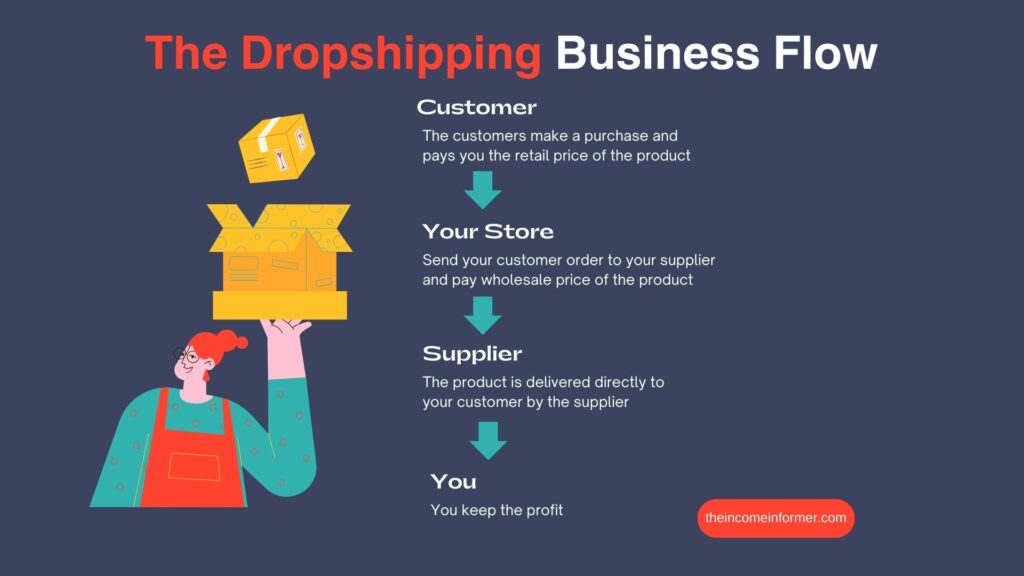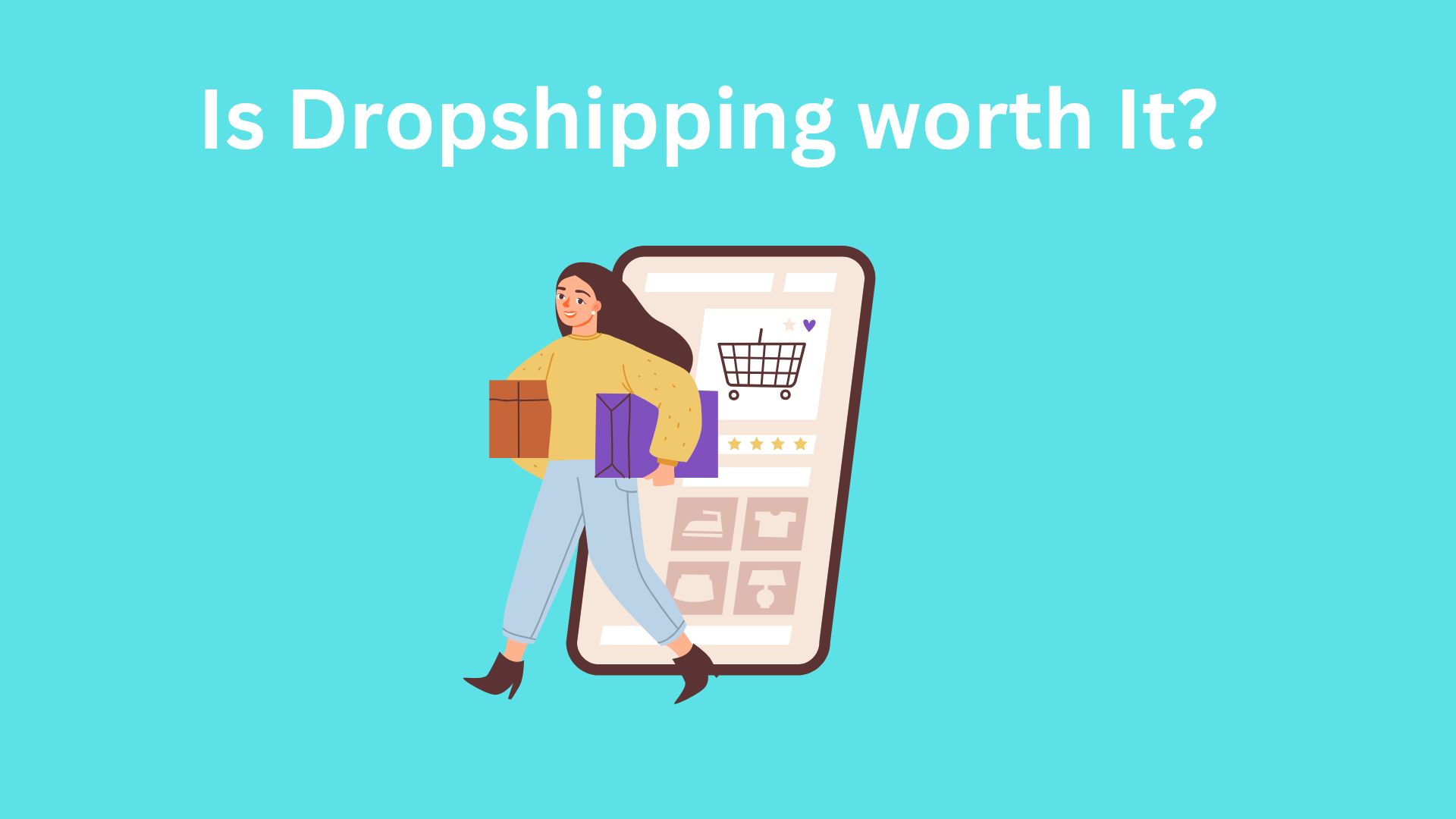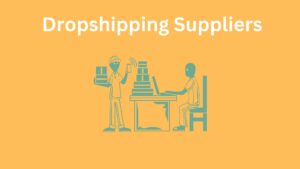Dropshipping has been a popular e-commerce business model for years, offering entrepreneurs an opportunity to sell products without handling inventory. With the industry evolving rapidly, many are asking, is dropshipping worth it in 2025? As technology improves and customer expectations shift, understanding the current dropshipping market is essential for success.
In this article, we’ll explore whether dropshipping is still worth pursuing in 2025, examining its pros and cons, profitability, legal considerations, and strategies for running a dropshipping business effectively. If you’re wondering if dropshipping is worth your time and investment, read on to get a comprehensive analysis of this ever-changing business model.
Key Takeaways:
- The dropshipping business remains an accessible way to start an online store with minimal upfront costs.
- Understanding dropshipping suppliers, product quality, and shipping times is critical for success.
- The global dropshipping market is expected to grow, but competition is increasing.
- Choosing the best dropshipping strategies and platforms can make dropshipping more profitable.
- The dropshipping industry has both advantages and challenges, including shipping costs, downsides of dropshipping, and potential legal hurdles.
What is Dropshipping?
Dropshipping is a retail fulfillment method where store owners sell products without keeping inventory. Instead, when a customer places an order, the retailer purchases the item from a dropshipping supplier, who then ships it directly to the customer. This business model eliminates the need for warehousing, reducing overhead costs.
Unlike traditional e-commerce, where businesses must invest in stock upfront, dropshipping allows entrepreneurs to test products without financial risk. However, the trade-off is that they have less control over product quality, shipping times, and customer experience.
How Does Dropshipping Work?

To start a dropshipping business, an entrepreneur must:
- Choose a dropshipping niche and research profitable dropshipping products.
- Partner with a reliable dropshipping supplier to source inventory.
- Build a dropshipping store using a dropshipping platform like Shopify, WooCommerce, or BigCommerce.
- Market their store using paid ads, SEO, and social media to attract customers.
- Process orders and ensure smooth delivery from the dropshipping partner to the customer.
Is Dropshipping Worth It in 2025?
The dropshipping industry has evolved significantly over the years. In 2024, competition intensified, making it harder to succeed with generic, low-quality products. To make dropshipping worth pursuing in 2025, sellers need to focus on unique branding, high-product quality, and faster shipping times.
The global dropshipping market is expected to grow, with advancements in automation and AI-driven product selection making the process more efficient. However, success in dropshipping depends on strategic decision-making and adapting to the market’s needs.
Pros and Cons of Dropshipping in 2025
Pros:
- Low Startup Costs: A dropshipping business with no money is possible by leveraging free tools and organic marketing strategies.
- Flexibility and Scalability: Dropshipping offers flexibility, allowing entrepreneurs to work from anywhere and test different products.
- Reduced Risk: No need to purchase inventory upfront, making it easier to experiment with different niches.
Cons:
- Competition in the dropshipping industry: More sellers mean lower profit margins unless you find a unique angle.
- Shipping delays and costs: Customers expect fast delivery, making supplier selection crucial.
- Product quality concerns: Working with reliable dropshipping suppliers is essential to avoid customer dissatisfaction.
- Legal challenges: Ensuring dropshipping is legal in your target market is necessary to prevent issues.
Understanding Profit Margins in the Dropshipping Business
How Profits Are Made in Dropshipping
Unlike traditional retail, where businesses buy products in bulk and mark them up, dropshipping allows sellers to operate without inventory. However, the profit margins in dropshipping work differently because sellers rely on third-party dropshipping suppliers. The typical profit formula includes:
Retail Price – Supplier Cost – Marketing Expenses – Transaction Fees = Profit
To ensure dropshipping is worth the effort, sellers must optimize pricing to balance affordability for customers while maintaining good profit margins.
Factors That Affect Profitability
Several key factors influence how much money you can make in dropshipping in 2025:
- Product Selection: High-demand dropshipping products with good product quality and low competition tend to yield higher profits.
- Shipping Costs: Lower shipping costs mean better margins. Choosing a dropshipping supplier with warehouses closer to your customers can significantly reduce expenses.
- Marketing and Advertising: Paid advertising is a significant cost. Sellers must balance ad spend with conversions to stay profitable.
- Competition in the Dropshipping Industry: Overcrowded niches lead to price wars, lowering profit margins.
Strategies to Make Dropshipping More Profitable
Choosing the Best Dropshipping Niche
One of the biggest mistakes beginners make is selling oversaturated products. To make dropshipping worth the effort, select a dropshipping niche with:
- High demand but moderate competition
- Repeat purchase potential
- Unique value propositions (e.g., eco-friendly, personalized, or innovative features)
Working with Reliable Dropshipping Suppliers
Your choice of dropshipping supplier can make or break your business. Poor product quality and long shipping times can lead to negative reviews and high return rates. To avoid this, always:
- Order sample products to test quality.
- Work with dropshipping suppliers who offer fast and reliable shipping.
- Use platforms like AliExpress, Spocket, or SaleHoo to vet potential dropshipping partners.
Optimizing Your Dropshipping Store for Conversions
A well-optimized dropshipping store can significantly improve profitability. Key optimization strategies include:
- User-friendly website design: Ensure your store is easy to navigate and mobile-friendly.
- High-converting product pages: Use high-quality images, compelling descriptions, and trust signals like customer reviews.
- Effective pricing strategies: Implement psychological pricing and limited-time discounts to drive sales.
Is Dropshipping Still Profitable in 2025?
With the right approach, dropshipping can be a profitable business model. However, to stay ahead in 2025, sellers must adapt to industry changes, focus on high-product quality, and leverage technology to streamline operations. While dropshipping still worth pursuing, those who fail to innovate may struggle to compete in the ever-growing global dropshipping market.
Legal Considerations in Dropshipping
Is Dropshipping Legal in 2025?
A crucial question for aspiring entrepreneurs is whether dropshipping is legal in their target markets. The good news is that dropshipping is definitely a legitimate business model in most countries. However, sellers must comply with e-commerce regulations, consumer protection laws, and tax requirements to avoid legal complications.
Key legal considerations include:
- Business registration: Depending on your location, you may need to register your dropshipping business as an LLC, sole proprietorship, or corporation.
- Taxes and import duties: Understand VAT, sales tax, and customs regulations in your selling regions.
- Supplier agreements: It’s advisable to draft a dropshipping partner agreement to clarify terms regarding product quality, refunds, and dispute resolution.
To avoid legal issues, consulting a lawyer to draft a dropshipping agreement or reviewing e-commerce laws in your target country is highly recommended.
Managing Customer Privacy and Data Protection
Data privacy laws such as the GDPR (Europe) and CCPA (California) require online businesses to protect customer data. When running a dropshipping business, ensure you:
- Use SSL encryption to secure transactions.
- Have a clear privacy policy stating how customer data is used.
- Follow email marketing regulations, including opt-in and opt-out options.
Neglecting these aspects can lead to penalties, loss of trust, and legal troubles, which can impact your dropshipping success.
Customer Service and Handling Returns
The Importance of Customer Service in Dropshipping
Providing exceptional customer support can make your dropshipping store stand out in the crowded dropshipping market. Since sellers don’t control fulfillment, they must maintain strong communication with both dropshipping suppliers and customers to resolve issues quickly.
Best practices for great customer service:
- Fast response times: Address inquiries within 24 hours.
- Clear refund and return policies: Work with your dropshipping supplier to establish transparent policies.
- Order tracking: Provide tracking updates to reduce customer anxiety over shipping times.
Handling Refunds and Returns Efficiently
One of the major downsides of dropshipping is dealing with returns and refunds. Since sellers don’t handle inventory, they must coordinate returns with dropshipping suppliers. Common solutions include:
- Offering partial refunds instead of returns to reduce shipping costs.
- Establishing return centers in key markets.
- Choosing suppliers with favorable return policies.
A smooth return process increases trust and can lead to repeat business, making dropshipping more profitable in the long run.
Advanced Strategies for Long-Term Dropshipping Success
Branding and White-Label Dropshipping
One of the biggest challenges in dropshipping in 2025 and beyond is differentiation. To build a profitable dropshipping business, consider branding your products. White-label dropshipping allows sellers to add custom packaging and logos to stand out from competitors.
Key benefits:
- Higher perceived value = better profit margins.
- Improved customer loyalty and repeat purchases.
- Better control over product quality compared to generic dropshipping products.
Investing in branding transforms a basic dropshipping business into a unique and recognizable brand, making it more sustainable in 2025.
Leveraging Automation and AI in Dropshipping
Technology is revolutionizing the dropshipping industry, and businesses that embrace automation have a competitive advantage. Tools like chatbots, AI-driven product research, and automated order fulfillment can make running a dropshipping store more efficient.
Key automation tools include:
- Dropshipping apps like Oberlo, Spocket, or DSers to sync inventory and automate orders.
- AI-powered chatbots for customer support.
- Dynamic pricing algorithms to optimize product pricing.
By integrating automation, sellers can focus on scaling their dropshipping venture rather than manual tasks.
Expanding Beyond Traditional Dropshipping Platforms
While Shopify and WooCommerce remain popular, exploring alternative platforms for dropshipping can unlock new opportunities. Some options include:
- Amazon dropshipping: Selling directly on Amazon’s marketplace.
- eBay dropshipping: Utilizing eBay’s vast audience for sales.
- Niche marketplaces like Etsy (for custom products) or Walmart Marketplace.
Diversifying sales channels helps mitigate risks and increase revenue streams, ensuring dropshipping is still worth it in 2025.
Challenges and Risks of Dropshipping in 2025
Increased Competition in the Dropshipping Industry
With the global dropshipping market expected to grow, competition is fiercer than ever. Many sellers enter the dropshipping business without a clear strategy, leading to oversaturated niches and price wars.
Key challenges include:
- Low-profit margins due to undercutting by competitors.
- Rising advertising costs, especially on platforms like Facebook and Google Ads.
- The need for constant innovation to stand out in a crowded market.
To overcome these issues, sellers must conduct thorough market research, focus on branding, and explore niche-specific strategies to make dropshipping still profitable in 2025.
Shipping Delays and Logistics Issues
One of the downsides of dropshipping remains shipping delays, especially when sourcing from overseas dropshipping suppliers. Long shipping times can lead to unhappy customers, chargebacks, and negative reviews.
To mitigate this, consider:
- Working with local dropshipping suppliers to reduce shipping times.
- Offering faster shipping options by using fulfillment centers.
- Setting clear expectations with customers regarding delivery timelines.
Efficient logistics management can make dropshipping worth pursuing, even in a competitive landscape.
Product Quality and Supplier Reliability
Ensuring product quality is a constant concern in dropshipping work. Since sellers don’t handle inventory, they rely entirely on their dropshipping supplier for quality control.
To maintain high standards:
- Order sample products before listing them in your dropshipping store.
- Partner with reputable dropshipping suppliers with verified reviews.
- Implement a strong refund policy to address quality issues.
Focusing on product quality enhances customer satisfaction, builds trust, and helps in making dropshipping profitable.
Is Dropshipping Still Worth It in 2025?
Who Should Consider Dropshipping in 2025?
While dropshipping is a great entry point into e-commerce, success depends on the entrepreneur’s approach. Dropshipping offers the most value to:
- Beginners looking for a low-investment business model.
- Marketers skilled in paid ads and social media growth.
- Entrepreneurs willing to invest in branding and automation.
For those willing to adapt and innovate, dropshipping is still worth it in 2025.
Final Verdict: Is Dropshipping Worth It in 2025?
Whether dropshipping is worth pursuing depends on various factors, including niche selection, supplier partnerships, and marketing strategies. While dropshipping can still be profitable in 2025, it requires more effort than in previous years.
For those who approach it strategically, focus on product quality, and leverage automation, dropshipping is definitely a viable business in 2025. However, those expecting easy profits without effort may struggle to succeed.
Explore More Articles
Frequently Asked Questions (FAQs)-Is Dropshipping Worth It
1. Is dropshipping legal in 2025?
Yes, dropshipping is legal in most countries. However, you need to comply with business registration, tax regulations, and consumer protection laws to operate within legal boundaries.
2. How much money do I need to start a dropshipping business in 2025?
You can start a dropshipping business with no money if using organic marketing methods, but having at least $500–$1,000 for ads, branding, and tools will increase your chances of success.
3. How long does it take to become profitable in dropshipping?
The time to profitability varies. With the right dropshipping business model, effective marketing, and high-quality products, some sellers see profits within 3–6 months, while others may take longer.
4. What are the best platforms for dropshipping in 2025?
Some of the best dropshipping platforms include Shopify, WooCommerce, Amazon dropshipping, eBay dropshipping, and niche marketplaces like Etsy.
5. How can I improve my dropshipping store’s success rate?
To achieve dropshipping success, focus on niche selection, branding, strong customer service, and marketing strategies such as social media advertising and influencer partnerships.
6. What are the biggest risks in dropshipping?
The main risks include supplier reliability, product quality issues, shipping delays, high competition, and rising ad costs. Managing these factors carefully can help in making dropshipping profitable.
7. Is dropshipping still worth it in 2025 with high competition?
Yes, but only if you differentiate your brand through quality products, fast shipping, and effective marketing. The global dropshipping market is expected to grow, but success requires a strategic approach.
8. Can I do dropshipping as a side hustle?
Yes! Many dropshipping businesses start as side hustles and grow into full-time ventures. The flexibility of dropshipping offers entrepreneurs a way to earn income without managing inventory.




